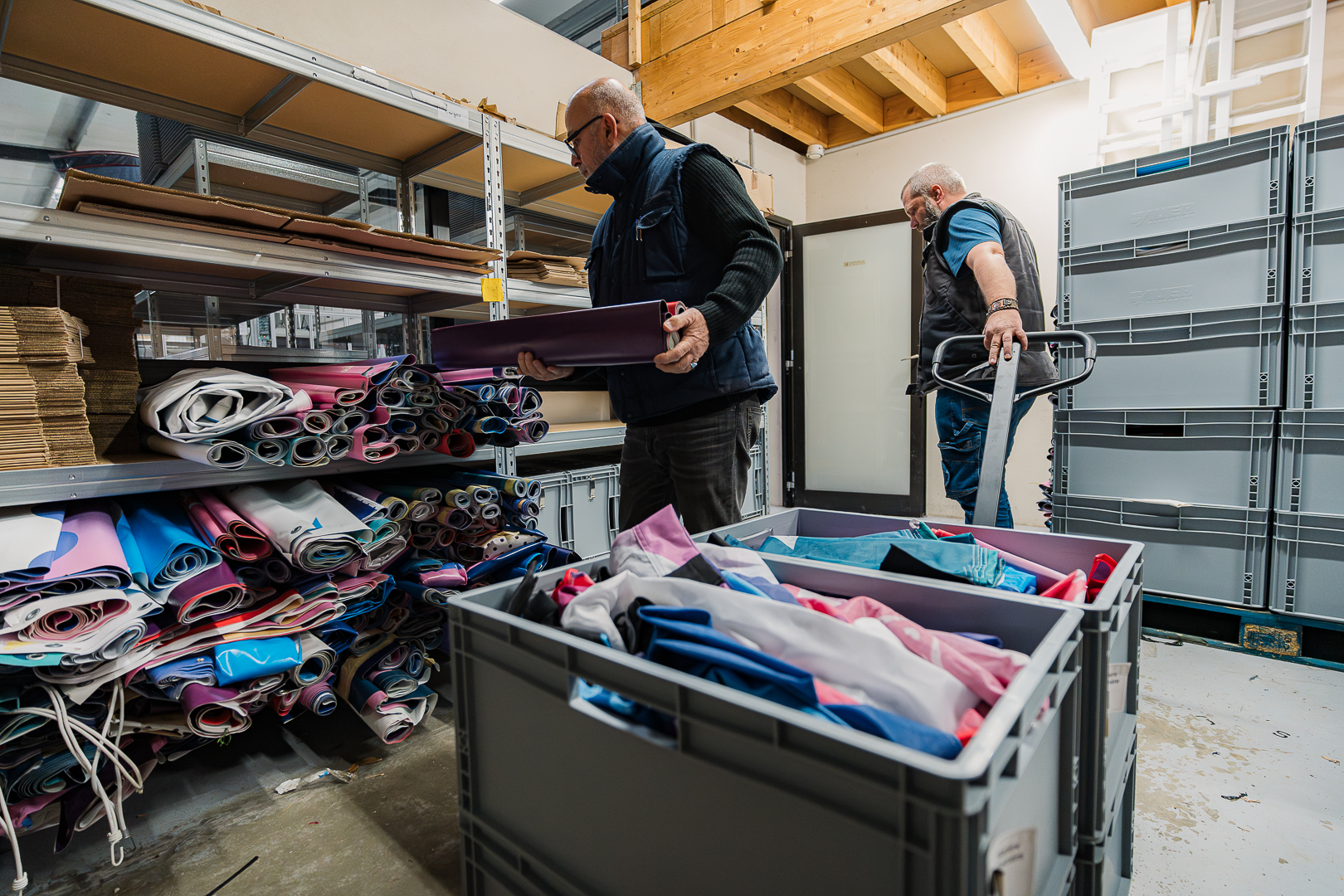Reducing textile waste is (also) a business matter
When corporate textiles become a major environmental challenge, making the most of what already exists becomes a strategic lever.

your
textile products with us?
Every year, the European Week for Waste Reduction focuses on everyday actions: sorting, repairing, consuming less and consuming better.
But behind these good individual practices, one angle remains too little explored: that of companies, responsible for a growing share of the textile waste produced in Europe.
Uniforms, tarpaulins, furnishing textiles, promotional clothing... every year, organizations generate thousands of tons of materials that can still be recycled.
In Europe, 12.6 million tonnes of textile waste are produced every year (European Environment Agency, 2023), with 87% ending up incinerated or buried. In France, almost 1.7 million tonnes of textiles are thrown away every year, 30% of which comes from public and private enterprises (ADEME, 2023).
Reducing textile waste is more than just a civic commitment: it's a strategic, environmental and economic challenge for companies. By optimizing their resources, they can reduce their footprint, mobilize their teams and transform their waste into sustainable value.

Textile waste: a collective and measurable challenge
Every item of clothing or professional accessory thrown away represents resources consumed: water, energy, raw materials.
For example:
- Producing a cotton uniform can require up to 4,000 to 5,000 liters of water (Water Footprint Network, 2017).
- The same uniform generates 3 to 7 kg of CO₂ equivalent, depending on cotton growing, transport, processing and finishing. (Source: Indian Textile Journal, 2022)
Textile waste also contributes to CO₂ emissions and environmental pollution.
In addition to environmental issues, textile management now has an influence on :
- Regulatory compliance (AGEC law, extended Textile EPR).
- Corporate CSR performance.
- Brand reputation, particularly among employees and customers.
Companies therefore have a key role to play: reduce, reuse and recycle their textiles, and turn this environmental leverage into a strategic and operational advantage.

Why companies have a role to play
Reducing textile waste is not just a civic gesture: companies are at the heart of the chain. As the government website reminds us
"Any company that produces or holds waste is responsible for its management. It must identify its waste, sort it at source, keep track of it in a register, ensure that it is recovered and comply with other regulatory requirements."(service-public.fr)
Companies choose the materials, suppliers, volumes produced and their use. There are a number of concrete actions you can take now:
- Optimize inventory and unsold stock management: Adopt management tools to monitor stock levels, and recycle surplus stock through donation, recycling or upcycling channels. For example, unused uniforms can be transformed into accessories or redistributed to associations.
- Prefersustainable and recyclable materials: select certified textiles (GRS, Oeko-Tex) and integrate circular criteria right from the design stage. These choices reduce environmental impact while guaranteeing quality, responsible products.
- Set up internal collection and recovery programs: Identify each flow: uniforms, event textiles, tarpaulins, furnishing fabrics, etc., and transform these materials into reusable resources. Textile EPR and Life Cycle Assessment (LCA ) can guide these initiatives and ensure their effectiveness.
When upcycling becomes a business model
These initiatives help to reduce the ecological footprint, while creating a positive social and organizational impact by involving teams. Some companies are showing that it is possible to give existing materials a second life:
- Orange transforms its event tarpaulins into responsible bags.
- SNCF Voyageurs transforms its seat fabrics into reusable accessories.
- For the Olympic Games, the MEL chose to upcycle its 2,500 m² of PVC tarpaulins via a local textile workshop in France, avoiding their destruction and creating a sustainable reuse.
These projects demonstrate that textile recovery is not only possible, it is strategic, local and a source of innovation for companies and local authorities, while also embodying their commitment to CSR.

Taking concrete action during Waste Reduction Week
The European Week for Waste Reduction (EWWR ) is much more than an awareness-raising campaign: it's a concrete opportunity for companies to take action and mobilize their teams around a tangible circular project.
Rather than being limited to individual gestures, this week can become a gas pedal of collective commitment, transforming textile management into a lever for innovation and internal cohesion.
Several initiatives can be implemented:
- Organize a textile collection in the office or workshop.
- Identify a pilot project to upgrade: uniforms, tarpaulins, overstock.
- Offer circular economy awareness workshops for teams.
These actions make CSR commitments visible, initiate a sustainable approach, and help internal practices evolve over the long term. Even on a small scale, each initiative contributes to making the reduction of textile waste part of the company's overall strategy.
Conclusion
Reducing textile waste is not just an environmental gesture: it's a strategic and collective lever for companies. By optimizing resources, making the most of what already exists, and getting teams involved, every organization can transform its waste into new uses.
Waste Reduction Week is the perfect opportunity to take action, set an example, and demonstrate that reducing textile waste is (also) a corporate affair.
Ideas, materials,
a project? We'd love to hear from you.
At Losanje, we can help you create responsible textile products, whether you have materials to recycle or not.
You might like
...


.png)
.jpg)
_LE_upscale_balanced_x4%20(1)%20(1).jpg)